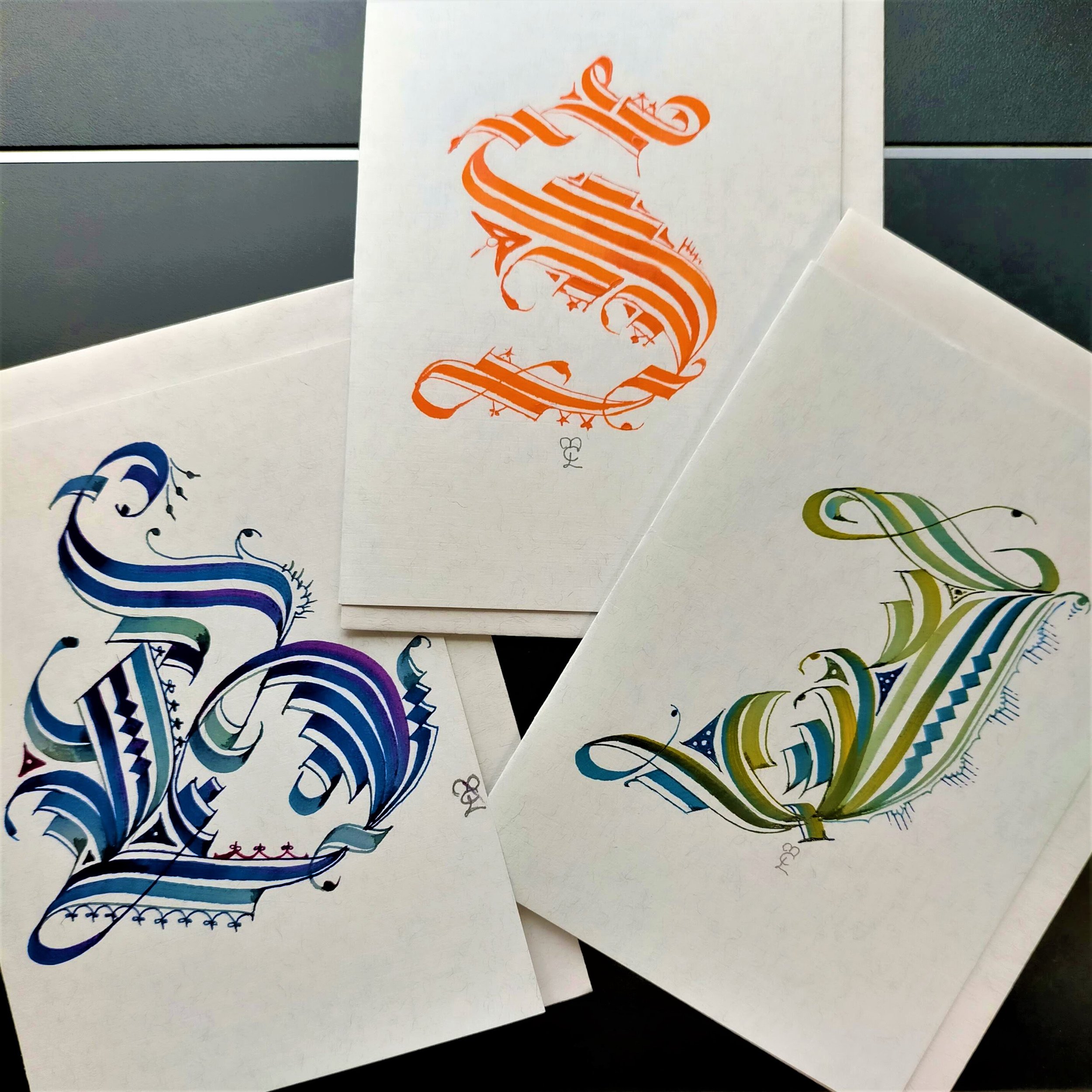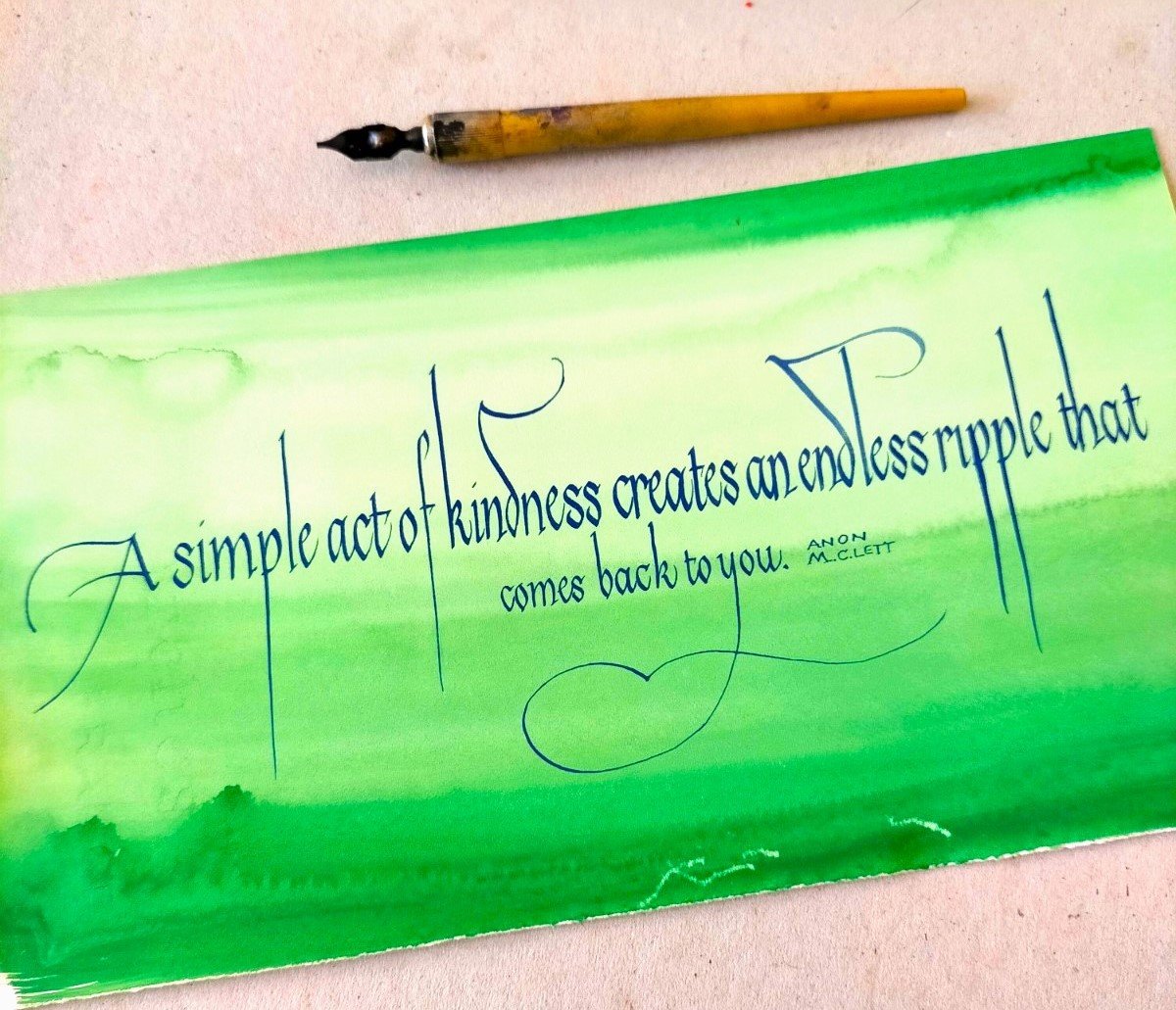For your logo & lettering design, certificates, name tags/badges, poetry, formal documents, Heraldry, illumination & more using traditional or contemporary styles to suit your needs.
Past Commissions
I welcome creative commissions of any size. Each piece of calligraphy, Celtic art, illustration or design, no matter how small or large, is created with equal care and attention to detail. I have over 3 years’ experience working with individuals, families, graphic artists, publishers, business, & community groups.
Calligraphy Demonstration
Uncial Script - Calligraphy Demonstration
Script Examples
Peruse my galleries of script examples, fill out the Enquiry Form below and click on the submit button.
I will reply within 24 hrs.
ITALIC SCRIPTS
Italic Scripts change in appearance by using different types of calligraphy nibs to:
Change the weight of the letters, making them thicker or thinner,
Change the style of the lettering using chisel edge nibs, pointed pen nibs, ruling pens, found objects as pens and more.
Script styles are influenced by:
The individual calligrapher’s habits,
The consistency of pen angle,
Pen manipulations or changes in pen angle,
Flourishing and more.
ROUNDHAND SCRIPTS
Roundhand Scripts included here are:
Foundational,
Carolingian,
Merlin, a script I adapted from a font into a calligraphy hand.
Changes in appearance from these basic styles are influenced by the same points as for Italic scripts.
In addition, as shown in my examples, the use of curved writing lines and changes in the height of letters along these lines add to the creativity of lettering art.
UNCIAL SCRIPTS
Uncial Scripts include a broad range of historic and modern styles, including:
4th century Uncial,
Insular Hands - 8th c. as seen in The Lindisfarne Gospels and 9th c. as seen in The Book of Kells,
Half Uncial,
Contemporary flourished Uncial designed by Sheila Waters.
Changes in appearance of these scripts is most often created by the pen angle, varying from 0 to 30 degrees.
Other changes in appearance are influenced by the same points outlined for the Italic scripts.
GOTHIC SCRIPTS
Gothic Scripts were used widely over many centuries. They developed from Roundhand Scripts, gradually compressed to take up less space on the precious vellum pages of manuscripts. Some of these shown in my examples, include:
Textura Gothic
12th c. Gothic
13th c. Gothic
Batarde or Cursive Gothic
Gothicised Italic
Cadels - A many layered and flourished Gothic capital letter.
POINTED PEN SCRIPTS
Pointed Pen Scripts are any style using a pointed pen, where the thick and thin strokes are created by the pressure placed on the nib in up and down strokes of the pen.
The script that usually comes to mind is Copperplate as written by our elders and past generations.
There are many lovely styles being used by calligraphers today.
My repertoire of pointed pen calligraphy includes:
Copperplate,
Adaptations of - Uncial, Italic, Gothic, Foundational, Carolingian and more,
Recreations of fonts styles from my library of typography.
ENQUIRY FORM
What happens next
As each commission is unique I will follow up your inquiry promptly with a few additional questions to ensure I reach a full understanding of your desired project.
Once we are both satisfied that the details are clear and understood, I will then provide you with a written quote and estimated date of commencement.
When you have approved the quote and I have received all relevant material to commence the work, I can then provide you with an estimated date of completion.
Once the work is completed I will send you email notification with a photograph/scan of the work for your approval. Please note that it is important to proof read any wording before sending me your approval of the finished artwork.
Payment is due once the work is approved and before delivery.
Pick up or delivery of work will be according to prior agreement, either in person from my studio or sent by Australia Post registered mail to your nominated postal address.
Frequently Asked Questions
1. Q. What is calligraphy?
A. Calligraphy is the art of creating beautiful hand lettering using various pen nibs and brushes with inks and paints. Calligraphy comes from the Greek word ‘kalligraphia’ meaning ‘beautiful writing’.
2. Q. What is the difference between a font and a script?
A. A font is a computer typeface created from a hand lettered style and is static.
A script is a hand lettered style of writing using metal nibs, reed pens, quills, brushes, ruling pens or found objects with the versatility to be adapted by the calligrapher to suit any art or formal project.
3. Q. What do you use calligraphy for? Wedding invitations?
A. Yes, weddings need calligraphy for a variety of stationery items. I also design certificates for education organisations, competitions, and corporate clients, including the recipient names. I create one off gifts of poetry, personalised gift wares, letters to significant others, and tattoo designs. As well as labels for products (eg. Wine labels), signs, logo design, book and magazine covers, bookplates, and more….
4. Q. What is Celtic Art?
A. The tradition of Celtic art dates back thousands of years. Historically, it best known by three Christian gospel manuscripts: The Book of Durrow, The Lindisfarne Gospels, and The Book of Kells, produced during the period A.D. 600 – 800 in Scotland and Ireland. Also, in exquisite examples of Anglo-Saxon jewellery found in the archaeological digs (eg. Sutton Hoo).
Celtic Art has 5 styles of pattern and design: Interlacing Knots; Step Patterns; Spirals; Key Patterns; and Zoomorphic design which includes plants, animals and the human figure intertwined with knots and spirals.
5. Q. What is Aussie-Celtic Art?
A. Aussie-Celtic Art is a modern genre of art I created to blend Celtic art styles with Australian plants and animals. This artform represents my identity as an Australian with Celtic heritage, conveying principles and ideas of environmental sustainability, as essential to the Earth as it is to our human wellbeing.

































































